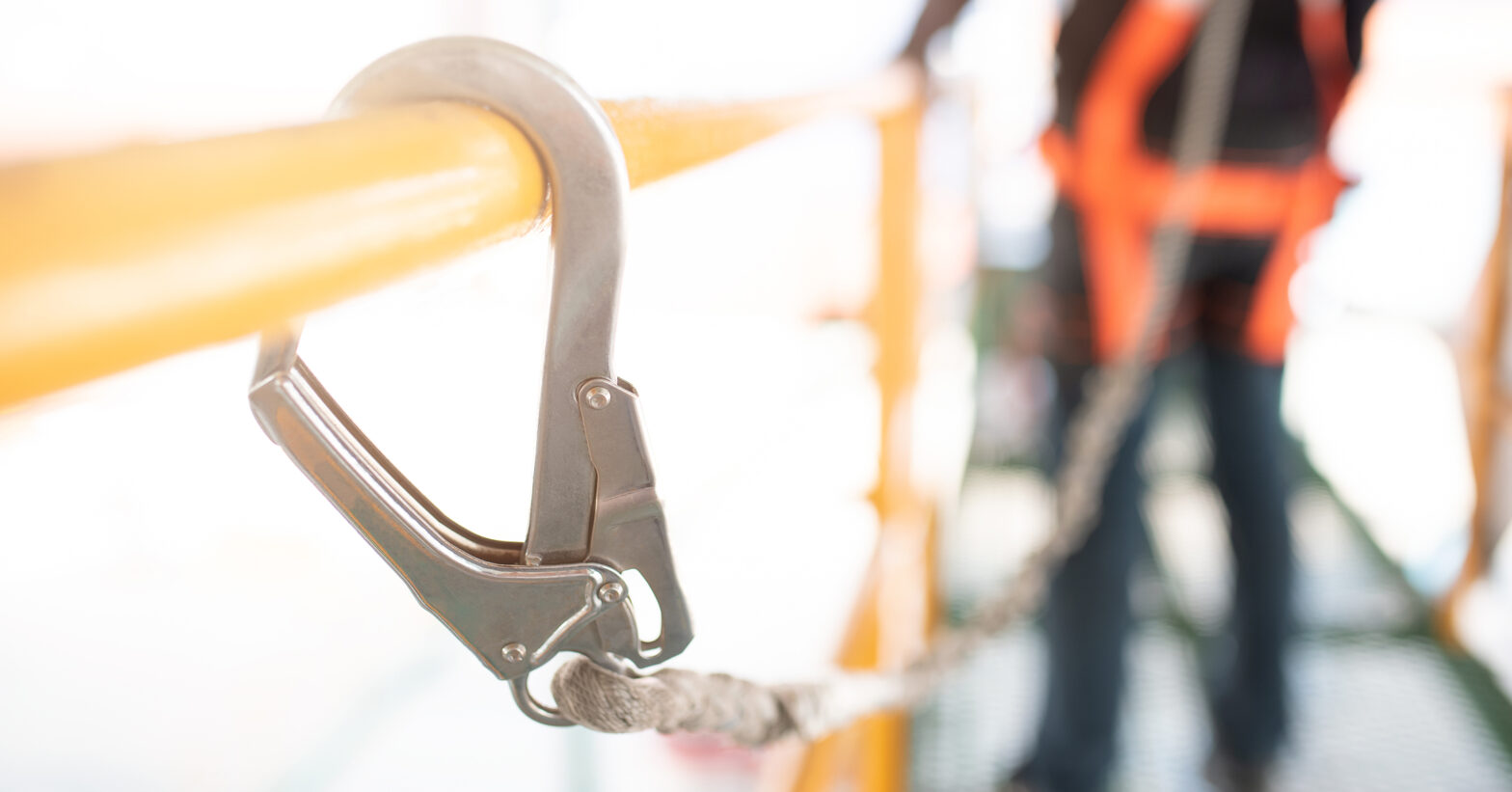
In the realm of workplace safety, preventing falls stands as a paramount concern. Working at height remains one of the biggest causes of fatalities and major injuries; each year, thousands of workers suffer injuries or fatalities due to falls.
According to HSE, falls from height accounted for the most common kinds of fatal accidents to workers in 2022/23. The Work at Height Regulations 2005 states that employers are responsible for providing control measures that prevent serious injuries caused by a fall from height. This blog aims to highlight the critical dissimilarity between two vital fall protection methods: fall arrest and fall restraint.
Defining Fall Arrest and Fall Restraint
Before diving into specifics, let’s define the terms.
The purpose of fall arrest is to mitigate the impact of a fall that has already occurred. In case of a fall, the fall arrest system springs into action, absorbing energy and minimising the force transferred to the body. This is achieved through a combination of harnesses, lanyards, lifeline systems, and anchor points. The aim is to minimise the impact force on the body and prevent injury in case of a fall.
Fall restraint, on the other hand, focuses on preventing a worker from reaching a fall hazard in the first place. This method creates a safe zone by controlling workers’ movement near potential fall hazards. It involves using equipment like anchorage points, lanyards and safety lines to restrict a worker’s movement to prevent them from getting too close to the edge or hazard.
Let’s break down the pivotal distinctions between fall arrest and fall restraint:
| Fall Arrest | Fall Restraint | |
| Purpose | Minimise impact of a fall | Prevent falls entirely |
| Equipment | Harnesses, Lanyards, anchor points | Restraint lanyards, safety lines, anchors |
| Worker Movement | Permits some movement near edges | Restricts movement near unprotected edges |
| Ideal Scenarios | High-risk tasks with potential falls | Tasks with safe distance from edges |
Choosing the right system
Selecting a suitable fall protection system depends on various factors, such as the nature of the task, height, and workspace layout. Fall arrest is ideal for tasks near edges or when falls are apparent, while fall restraint excels when workers can maintain a secure distance from hazards.
Selecting a suitable fall protection system depends on various factors, such as the nature of the task, height, and workspace layout. Fall arrest is ideal for tasks near edges or when falls are apparent, while fall restraint excels when workers can maintain a secure distance from hazards.
Fall arrest systems are best suited for tasks requiring workers to operate near edges or areas where falls are more likely to occur. In industries such as construction, roofing, and tower climbing, where workers operate at considerable heights, fall arrest systems provide a safety net in case a fall occurs. They are designed to minimize the impact of a fall that has already happened, thus reducing the risk of injury or fatality. If a task involves working in a potentially precarious position where the edge is accessible, fall arrest equipment like harnesses, lanyards, and anchor points offer a critical layer of protection.
Prioritising training and compliance
Regardless of the chosen system, proper training is paramount. Moreover, workplaces must adhere to pertinent safety regulations and standards to ensure compliance and uphold a secure environment for all.
Gaining insight into the disparities between fall arrest and fall restraint is instrumental in safeguarding workers across industries. Both techniques contribute significantly to maintaining a safe work environment. By making informed decisions, providing comprehensive training, and upholding safety standards, we can significantly diminish fall-related accidents and prioritise the well-being of those working at heights.




![stronghold global logo[94]](https://www.strongholdglobal.com/wp-content/uploads/2022/03/Stronghold-Global-Logo94.png)




